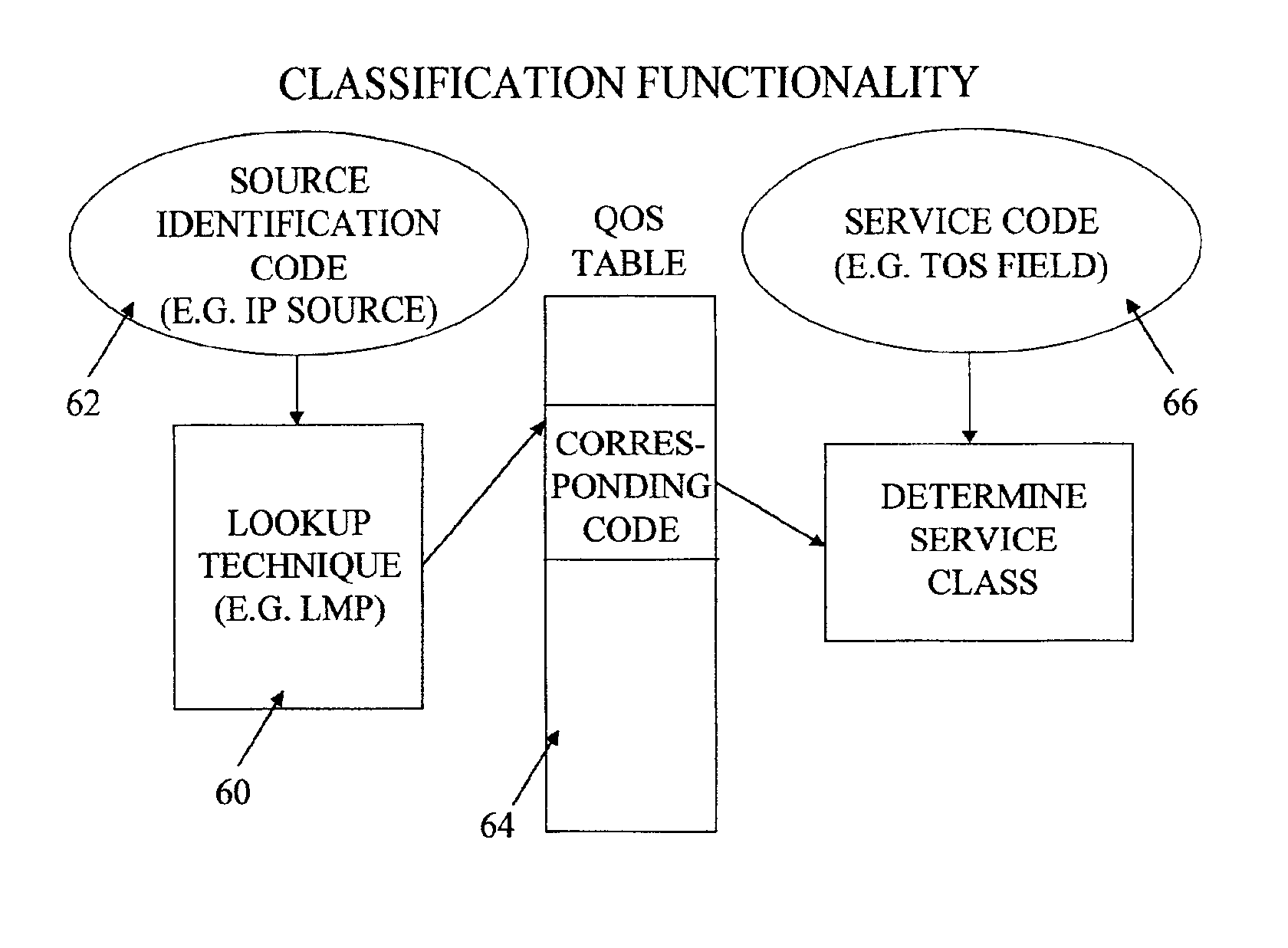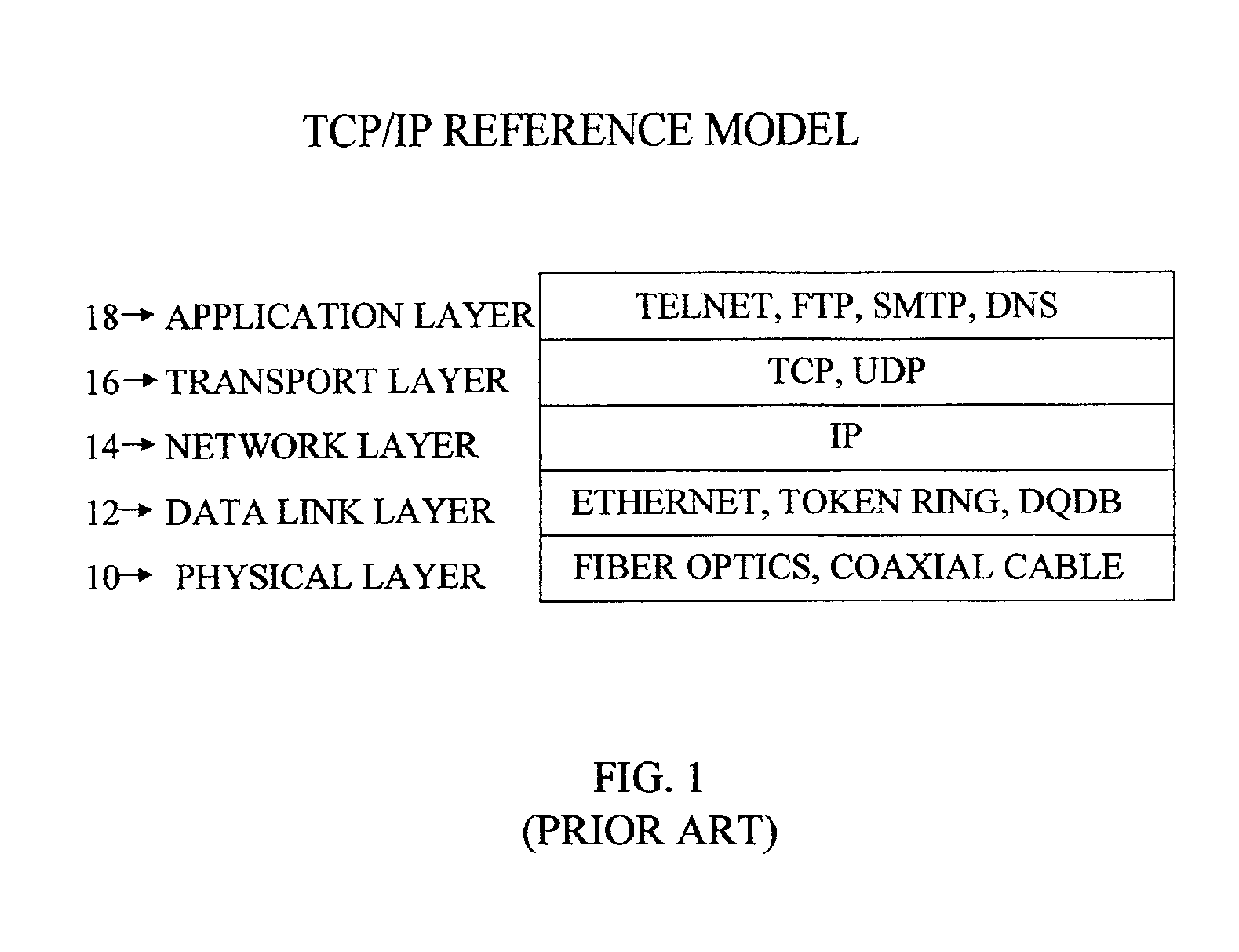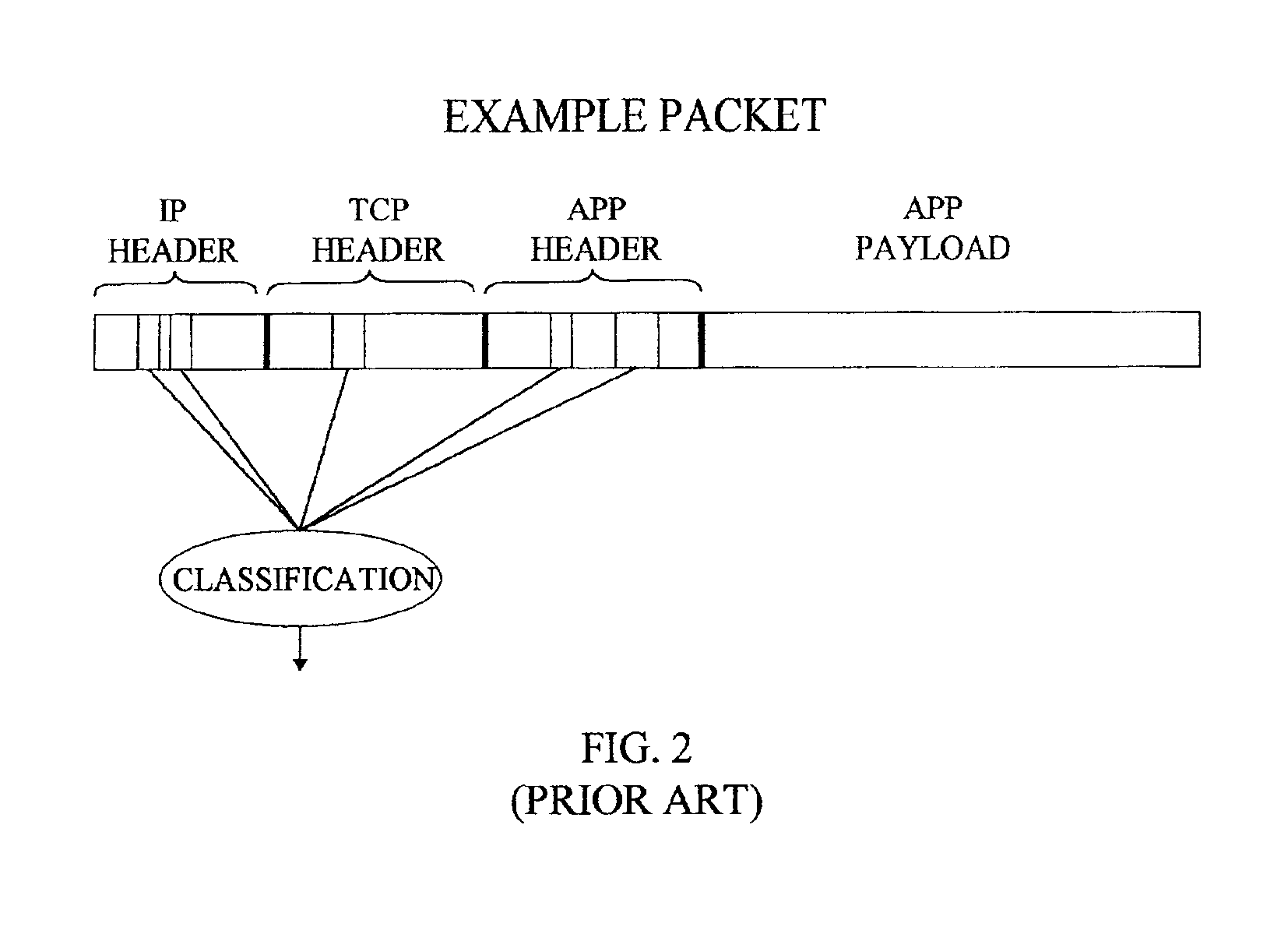Apparatus and method for classifying packets
a packet and apparatus technology, applied in the field of methods and apparatus for classifying packets, can solve the problems of algorithmically difficult classification, requiring expensive special-purpose hardware, and a relatively long classification time, so as to achieve the effect of removing a bottleneck from the internet backbone, facilitating the classification of its own packets, and reducing the processing power of desktop computers
- Summary
- Abstract
- Description
- Claims
- Application Information
AI Technical Summary
Benefits of technology
Problems solved by technology
Method used
Image
Examples
Embodiment Construction
[0057]Referring to FIG. 5, a generalized system is shown having a host computer 20 connected to a local area network (LAN) 22. Network 22 may be used by a small group or may be elaborated into a wide area network (WAN) for a larger enterprise. Network 22 may have a number of bridges or routers that connect to other networks in a known manner. Network 22 may also have a number of servers (not shown) operating as file servers, database servers intranet servers, etc.
[0058]Network 22 is shown connecting to edge router 24. In some embodiments, edge router 24 may be part of network 22 and therefore be maintained and operated by the same local administrator. In other embodiments, edge router 24 will be operated by an independent ISP (Internet service provider) or by another provider that is offering a PN (private network) that may or may not communicate over the Internet.
[0059]Where the edge router 24 is operated by an independent third party, network 22 will typically contain a gateway ro...
PUM
 Login to View More
Login to View More Abstract
Description
Claims
Application Information
 Login to View More
Login to View More - R&D
- Intellectual Property
- Life Sciences
- Materials
- Tech Scout
- Unparalleled Data Quality
- Higher Quality Content
- 60% Fewer Hallucinations
Browse by: Latest US Patents, China's latest patents, Technical Efficacy Thesaurus, Application Domain, Technology Topic, Popular Technical Reports.
© 2025 PatSnap. All rights reserved.Legal|Privacy policy|Modern Slavery Act Transparency Statement|Sitemap|About US| Contact US: help@patsnap.com



